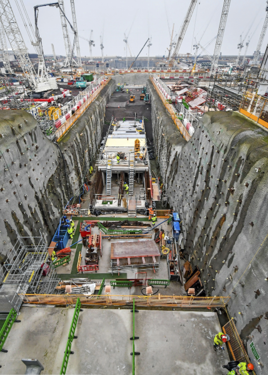PFI or PPP deals came particularly unstuck on London Underground.
To cut a long story short, the government back in the 2000s decided to contract out maintenance and upgrade work on London Underground. Private companies, usually as members of consortia, bid for this work. They then found that upgrade work in particular was more expensive than they thought, so they claimed extra money from Transport for London, which naturally resisted.
It fell to an independent arbiter to decide these claims. The usual result was that the arbiter decided that TfL should pay more, but not as much as the private companies claimed. When they were unable to raise the extra money from private markets, the PPP companies fell into administration. Their shareholders lost money and taxpayers had extra bills, too.
At the heart of these PPP problems was the transfer and treatment of risk. The Tube PPP companies shouldered the risk of finding the infrastructure that needed more work. This was tolerable up to a point, but when they found much more work and no one willing to pay for it, the deals collapsed.
If government wanted to build a new railway, where should the risk sit of dealing with adverse ground conditions caused by old mine workings?
Placing it with private contractors will lead to those contractors pricing it in - they will quote and charge more to protect themselves from the cost of finding and dealing with mine workings. If they find none, they will do very well financially and ministers will feel like they’ve overpaid.
If government takes the risk, it could see keener quotes and prices from contractors, and it will only have to pay extra if mine workings appear.
That’s reasonably simple. Now add operating the new line into the contract, and decide whether the contractor or government should be on the hook for future problems from mine workings.
Life then becomes more complicated. The contractor will want to build a railway that can withstand future problems, which might result in over-engineering and government overpaying.
That’s the flaw at the heart of ‘design, build, operate and maintain’ (DBOM) deals. Perhaps it’s better to split them into ‘design and build’ and ‘operate and maintain’ deals, with a firebreak preventing risk from one infecting the other. Which was the usual way of doing things.
It doesn’t prevent private sector investment, as High Speed 1 shows. It was built with public money, but then let to private investors as a 30-year concession. The key to making HS1 attractive was its long deal, because that provides more certainty.
But (there’s always a but) there’s sense in designing for lowest maintenance cost rather than designing for lowest build cost if this gives lower whole-life costs. Splitting DBOM into two removes this possibility, unless the contracting authority (government or Network Rail in this context) has the skills to bridge the gap. In other words, they need to be a competent client.














